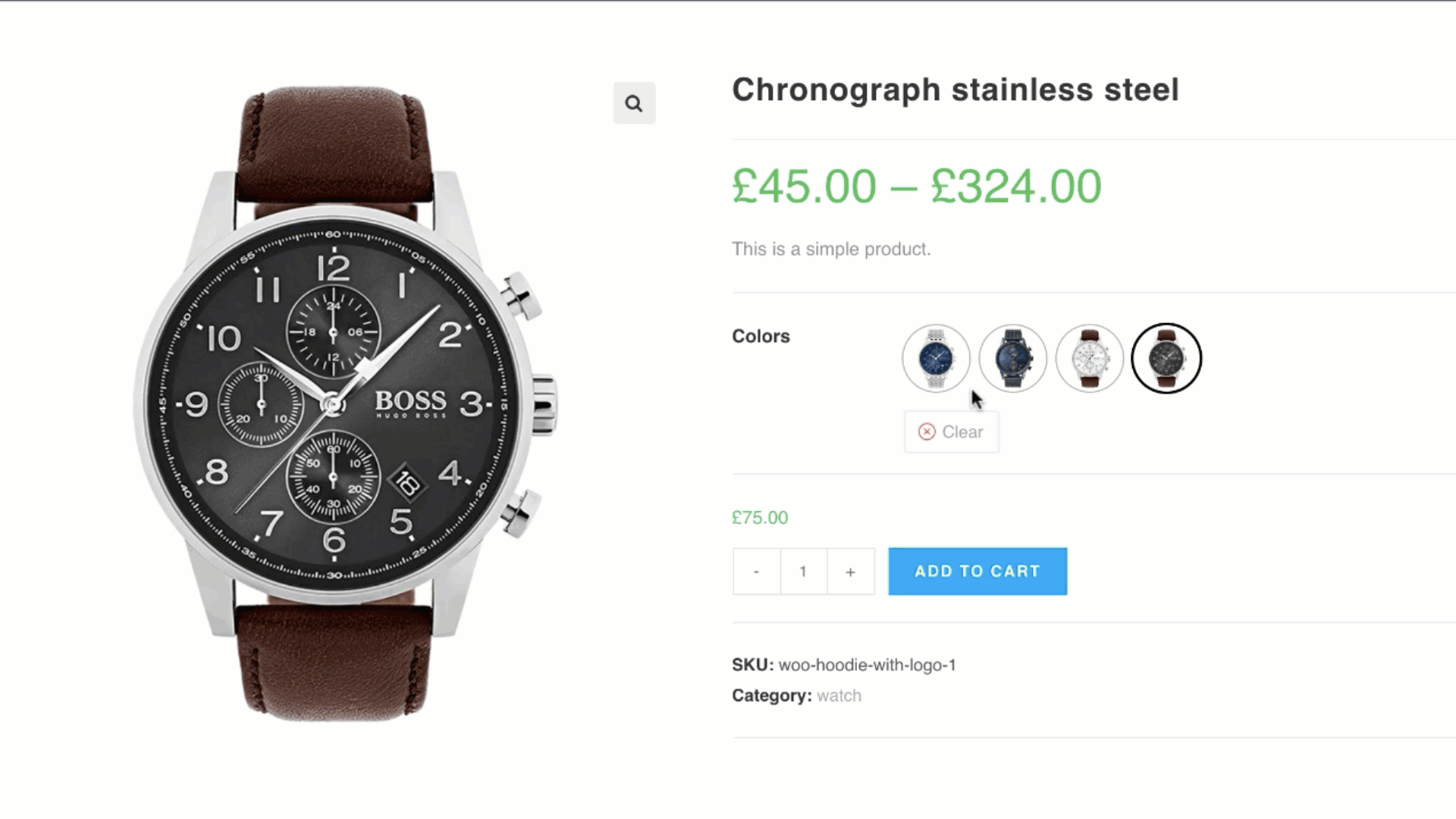
Tutorials
- How To Create To Image Variation Swatches For Global Attributes
- How To Create To Image Variation Swatches For Manual Attributes
- How To Create To Image Variation Swatches From Scratch
How To Create Image Variation Swatches For Globally Created Attributes
Video Tutorial
If you have variable product in your store and have attribute variation created globally in attributes >> products page. This tutorial is for you.
Step 01: Editing Attribute
Head to the Products >> Attributes. All existing global attributes are listed in the attribute list page section. After installing WooCommerce Variation Swatches plugin, it adds Type field. By default it would show Select under Type title. As WooCommerce Variation Swatches Plugin comes with 4 attribute types: Color, Image, Button and Radio. You can set any of attribute type for your desired attribute.
For demonstration purpose, Image attribute has been created. We’ll add image attribute type for Image attribute.
To set image attribute type to Image attribute, click on Edit.
As WooCommerce Variation Swatches Plugin comes with 4 attribute types: Color, Image, Button and Radio. You can set any of attribute type for your desired attribute.
For demonstration purpose, Image attribute has been created. We’ll add image attribute type for Image attribute.
To set image attribute type to Image attribute, click on Edit.
 After selecting button, it will open attribute editing panel. Select Image Type from the type dropdown.
After selecting button, it will open attribute editing panel. Select Image Type from the type dropdown.
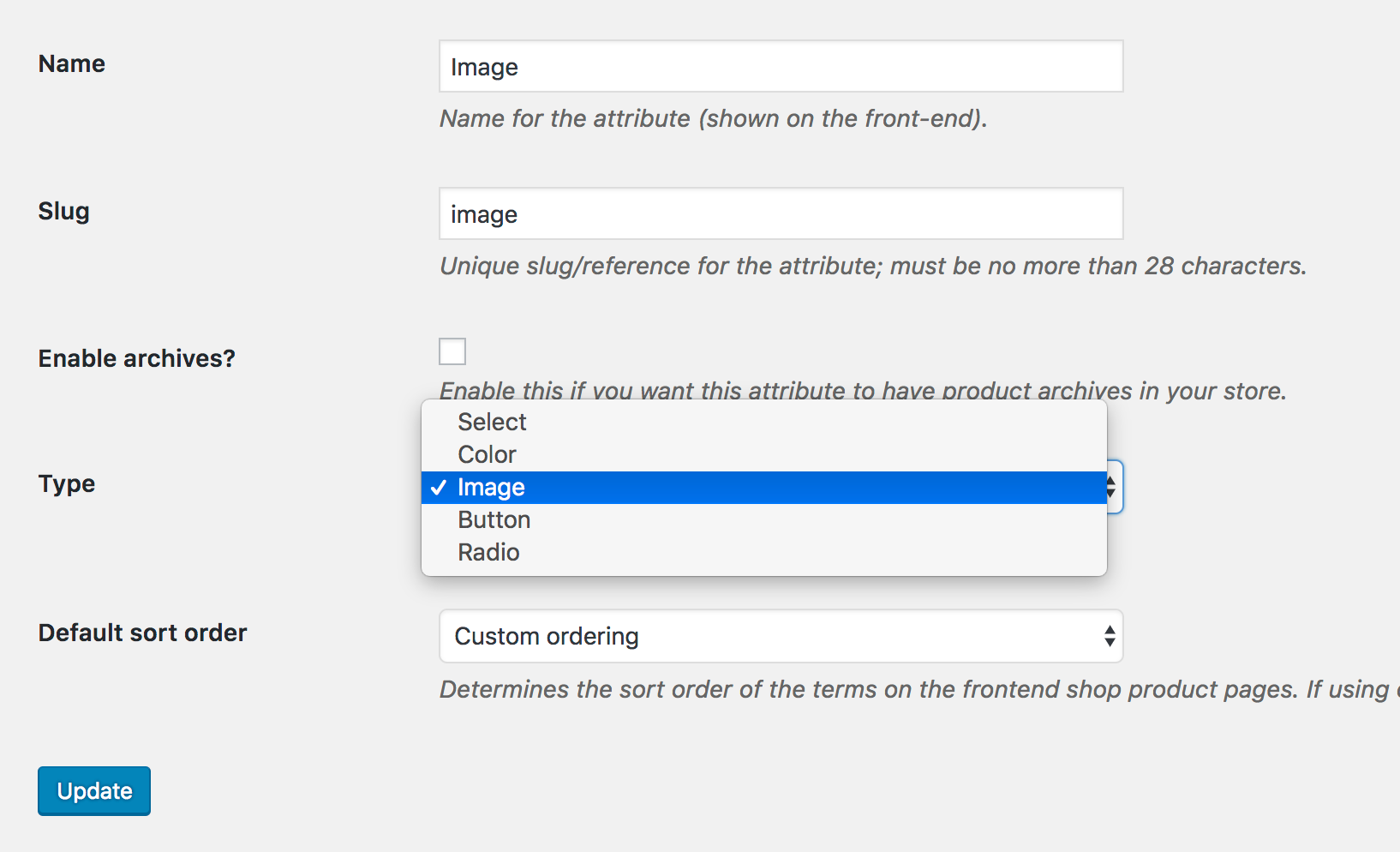 When attribute type selection is completed, get back to the attribute list page. The Attribute list would look like the following image. Now Image Attribute is showing Image type instead of default Select type.
When attribute type selection is completed, get back to the attribute list page. The Attribute list would look like the following image. Now Image Attribute is showing Image type instead of default Select type.
 After selecting attribute type, the frontend of the product would look like the following screenshot. Don’t be panic, if you find your attribute variations weird. It happens because you haven’t set any image for variations yet.
After selecting attribute type, the frontend of the product would look like the following screenshot. Don’t be panic, if you find your attribute variations weird. It happens because you haven’t set any image for variations yet.
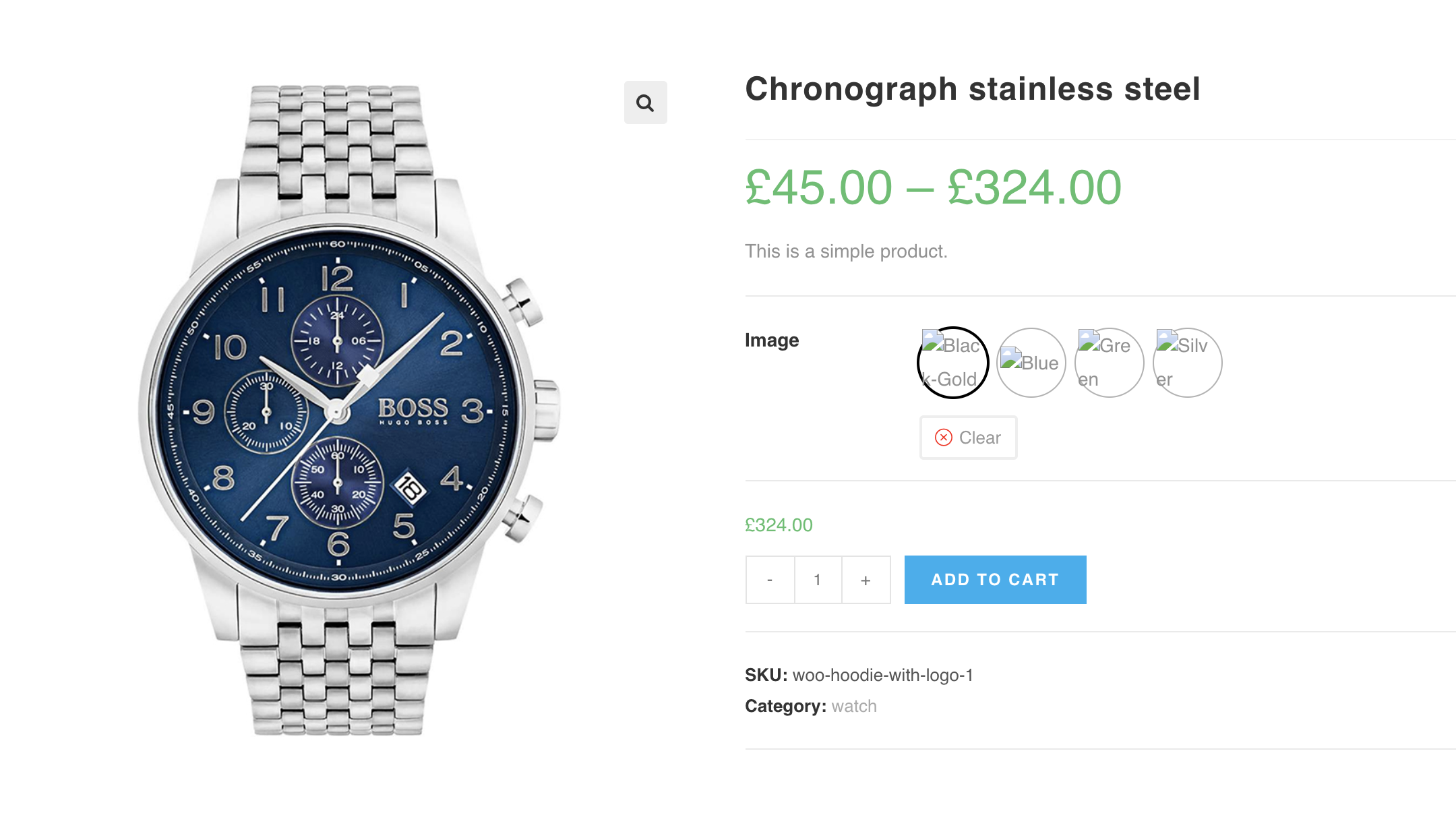
Step 02: Editing Variations
To define image as variations inside the image attribute. Head over to Products >> Attributes. Select Configure terms from image attribute. After selecting Configure terms, a list of attribute variations comes up. For Image attribute, three variations: Charmeuse, Satin, Silk, Velvet and Wool variations are listed for me. As those variation have no image defined, they look like the following screenshot.
After selecting Configure terms, a list of attribute variations comes up. For Image attribute, three variations: Charmeuse, Satin, Silk, Velvet and Wool variations are listed for me. As those variation have no image defined, they look like the following screenshot.
 Edit each variation one by one to add variation image. For demonstration, I am going to select Edit link for Charmeuse variation.
Edit each variation one by one to add variation image. For demonstration, I am going to select Edit link for Charmeuse variation.
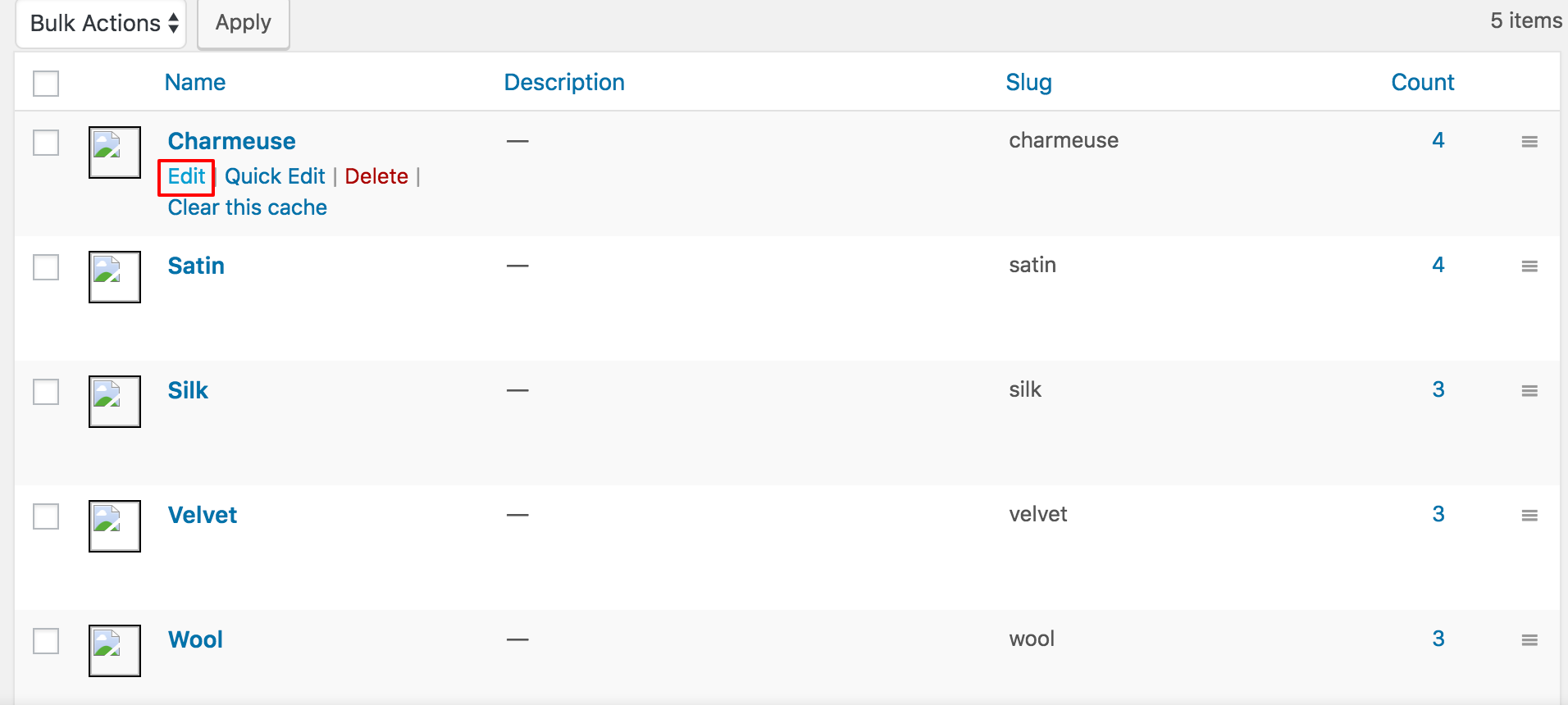 From variation edit panel. Select desired image press Upload/Add Image button and the update the changes pressing the Update button. For my red variation.
From variation edit panel. Select desired image press Upload/Add Image button and the update the changes pressing the Update button. For my red variation.
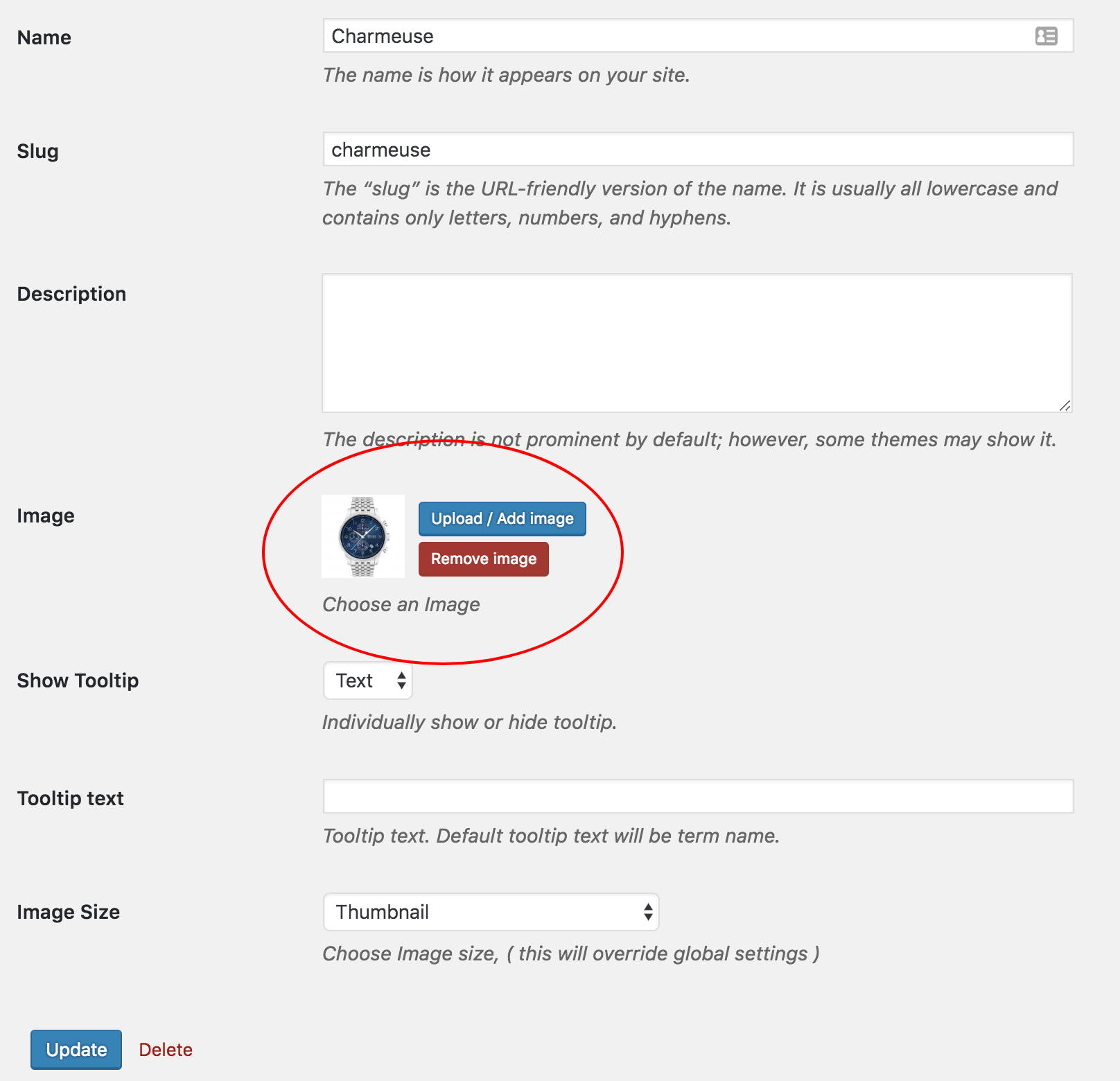 After adding image for entire variations, my variation list page looks like the following screenshot.
After adding image for entire variations, my variation list page looks like the following screenshot.
 And the frontend of my variable product that is connected with global attribute would look like following image.
And the frontend of my variable product that is connected with global attribute would look like following image.
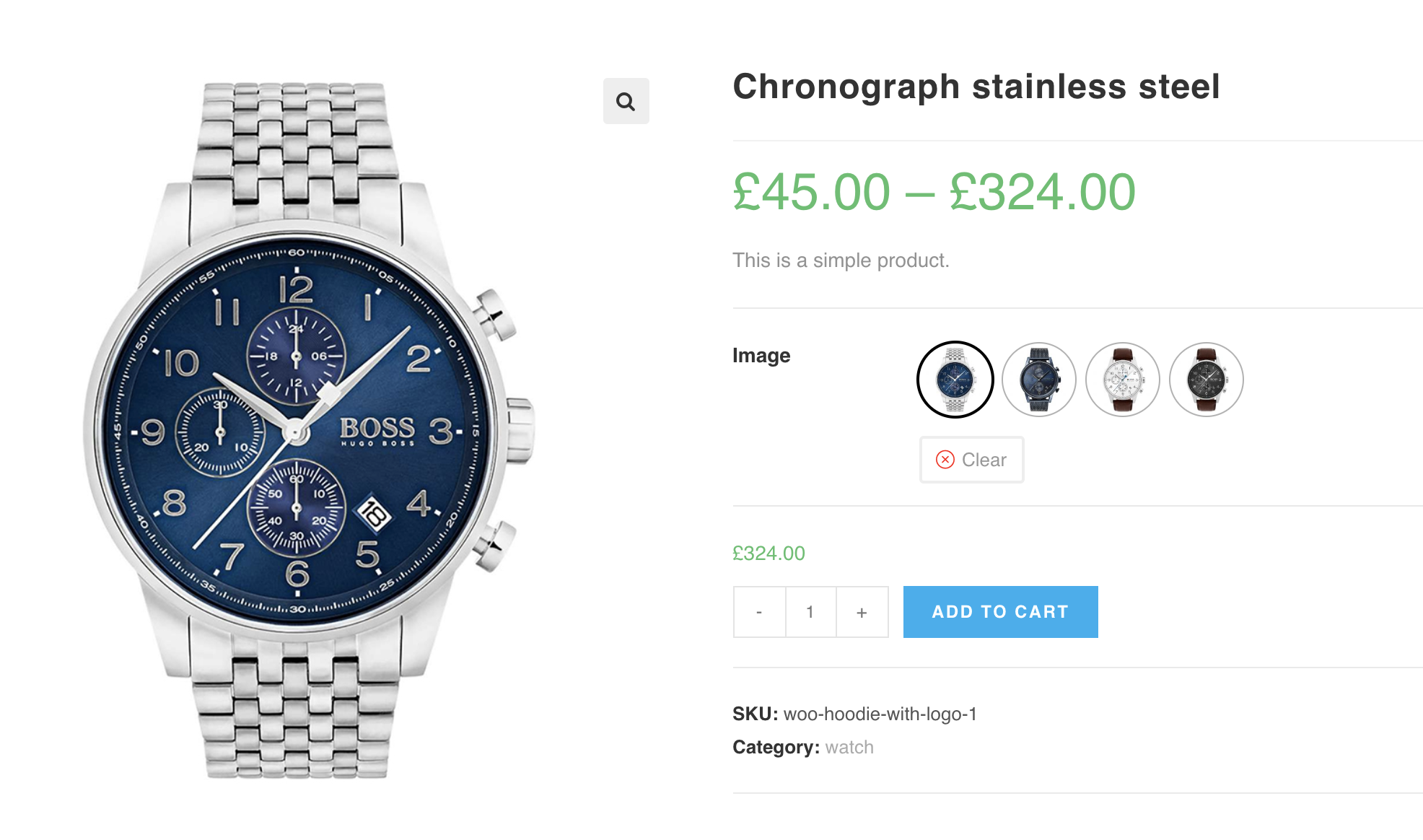 .
.
How To Create Image Variation Swatches From Manually Created Attributes
Video Tutorial
Step O1: Pro Plugin Setup
If you have variable products in your store and don’t have product attributes created globally, it means you have created attribute and it’s variations manually. To convert manually created attribute variations into image swatches, make sure you have premium version of WooCommerce Variation Swatches created. [button style=”rounded-btn” text=”Live Demo” button_link=”http://bit.ly/site-doc-manual-attribute-demo” link_target=”_blank” type=”medium-btn” bg_color=”#333333″ text_color=”#FFFFFF”] [button style=”rounded-btn” text=”Upgrade to Premium Version” button_link=”http://bit.ly/image-manual-doc-pro” link_target=”_blank” type=”medium-btn” bg_color=”#56bfd4″ text_color=”#FFFFFF”]Step O2: Change Manual Attribute Type
If you head to your Attributes tab from product data inside your product edit mode, and found variations are separated by pipe sign like the following screen. It means you have created variation manually.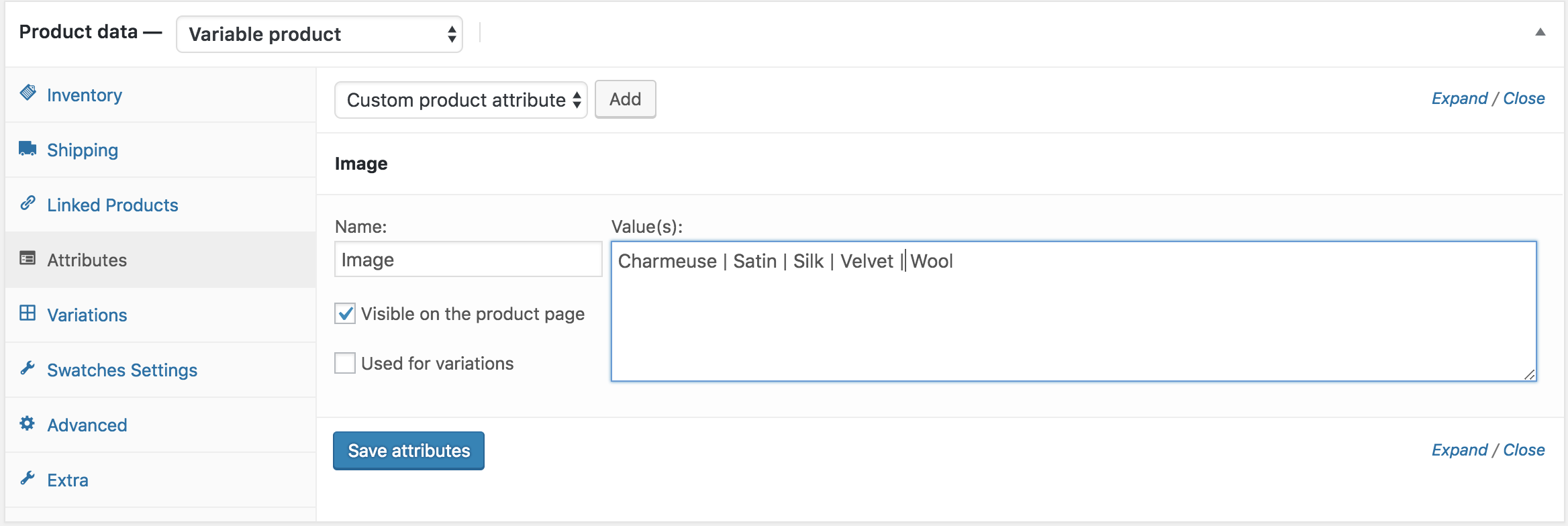 To Convert these manually created attribute variations, head to Swatches Settings tab, and select Image type from Select (Default) Dropdown.
To Convert these manually created attribute variations, head to Swatches Settings tab, and select Image type from Select (Default) Dropdown.
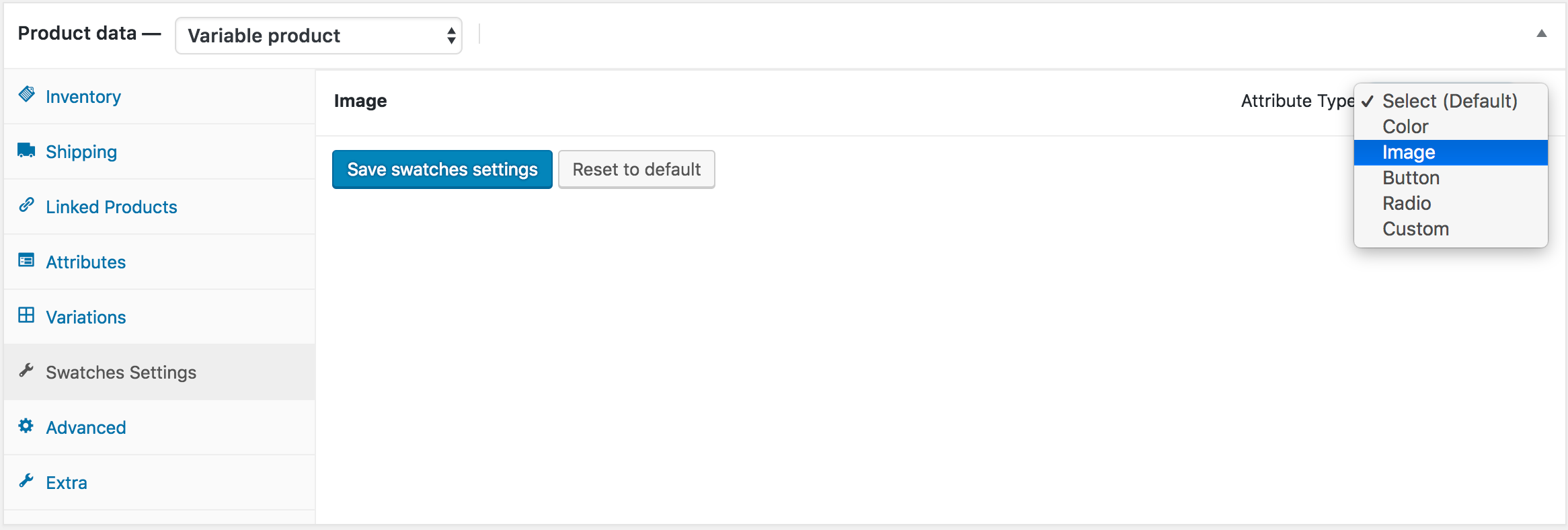 After selecting attribute type, the frontend of the product would look like the following screenshot. Don’t be panic, if you find your attribute variations weird. It happens because you haven’t set any image for variations yet.
After selecting attribute type, the frontend of the product would look like the following screenshot. Don’t be panic, if you find your attribute variations weird. It happens because you haven’t set any image for variations yet.
 Step O3: Select Image For Variations
After selecting attribute type, press the Image attribute accordion, it will reveal setting to add images for its available variations.
Step O3: Select Image For Variations
After selecting attribute type, press the Image attribute accordion, it will reveal setting to add images for its available variations.
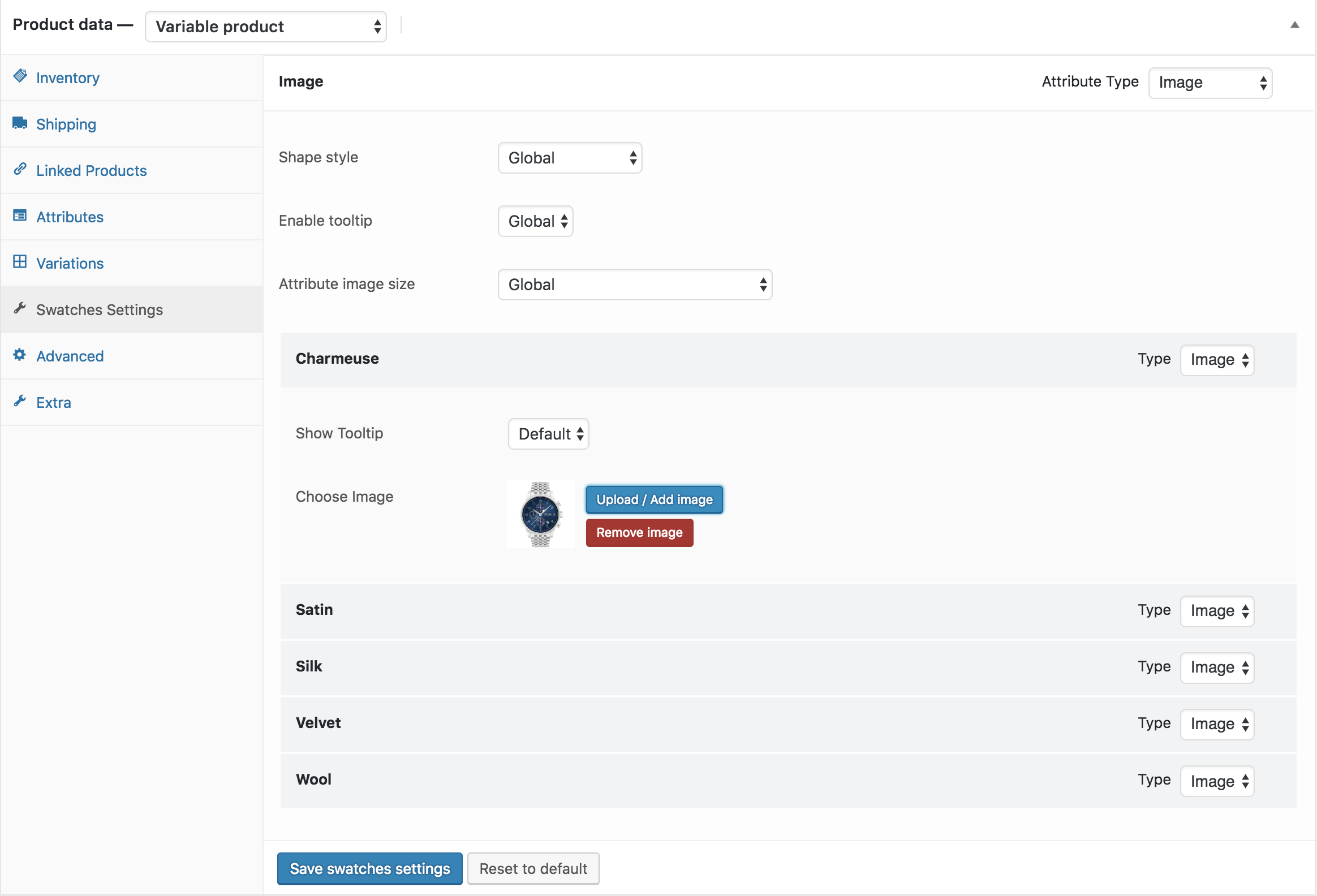 After adding the above option the frontend would look like the following screenshot.
After adding the above option the frontend would look like the following screenshot.
 .
.
How To Create Image Variation Swatches From Scratch
Video Tutorial
Step 01: Create Attribute
At the very beginning, we have to create image attribute and its variations globally. To create image attribute globally, navigate to Products >> Attributes. As we’ll create image attribute for our product. Fill the name field with your desired attribute name. In this tutorial, I’ve termed attribute name: Image. You can leave Slug field empty. It automatically generates the slug for the attribute. From the Type dropdown select Image attribute type. When the mandatory fields are filled, select Add Attribute button.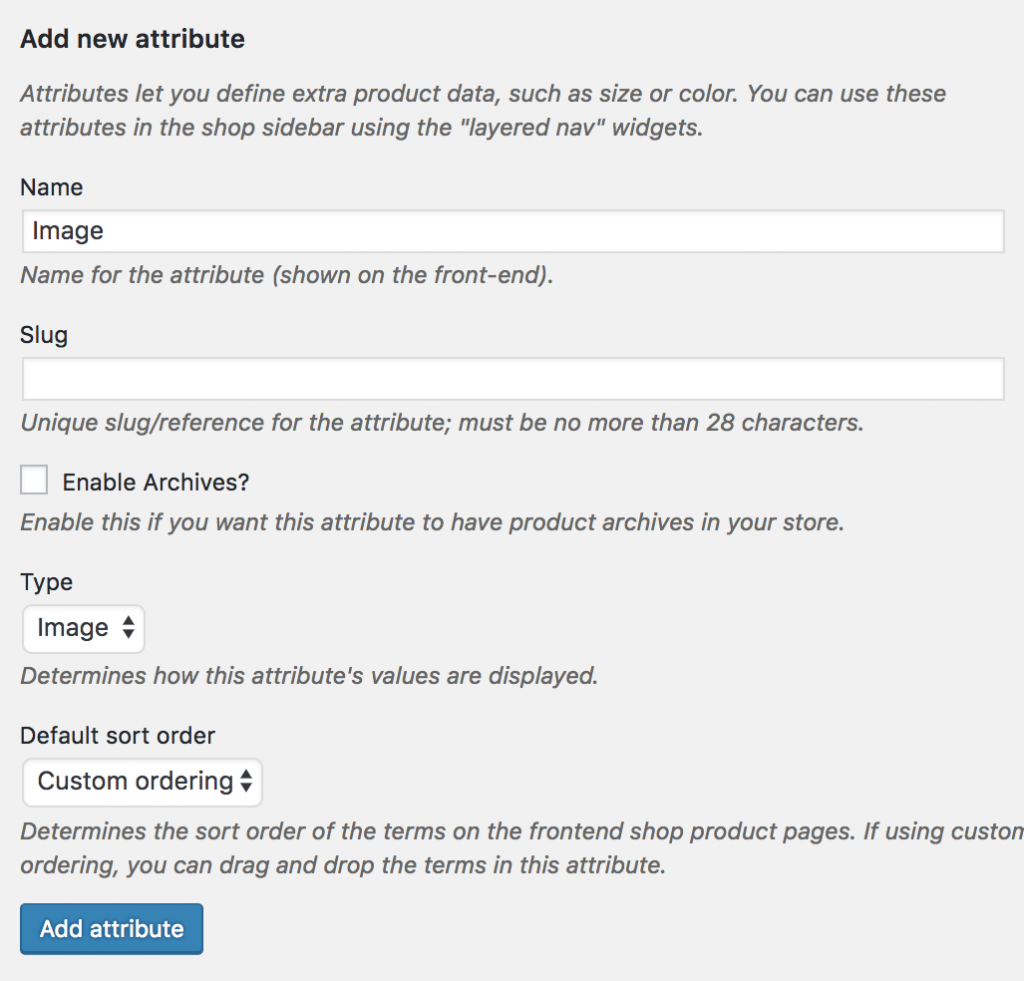 After creating attribute, you will notice a list is created in the right side. Check the following screenshot.
After creating attribute, you will notice a list is created in the right side. Check the following screenshot.

Step 02: Create Attribute Variations
The more variation you would add, they would get added to this list. When an attribute is created, we need to create attribute variations. To create product variations, click on the Configure terms from the attribute list. As we have created a Image attribute. We’ll add images as variations inside the Image attribute. In this tutorial, we’ll add Charmeuse, Satin, Silk, Velvet and Wool variations. To create variations inside image attribute. Fill the Name field with your desired variation name, leave the slug field empty, and select your desired image from the media library or upload from your computer.
As we have created a Image attribute. We’ll add images as variations inside the Image attribute. In this tutorial, we’ll add Charmeuse, Satin, Silk, Velvet and Wool variations. To create variations inside image attribute. Fill the Name field with your desired variation name, leave the slug field empty, and select your desired image from the media library or upload from your computer.
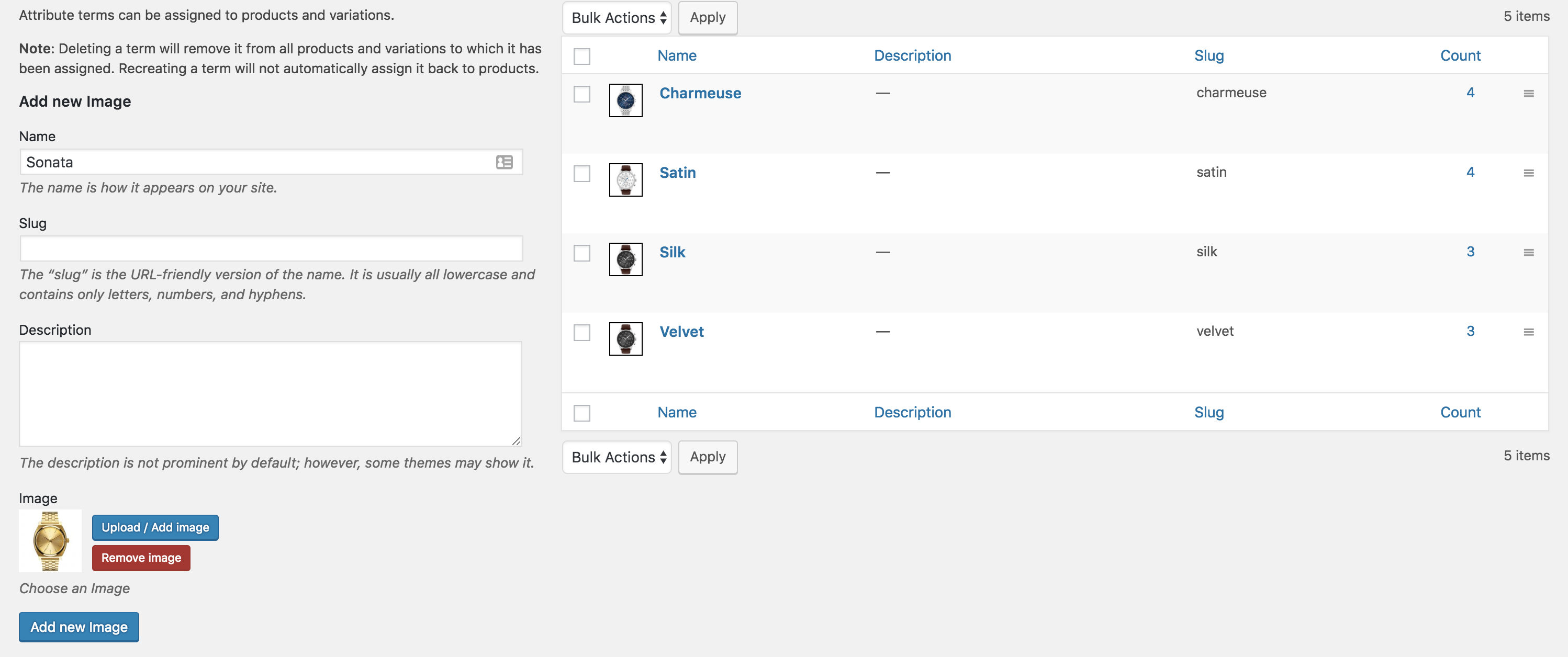
Step 03: Enable Attribute Variation in Variable Product
It’s time to enable image swatches inside a variable product. To enable image swatches in your desired product. Get into your desired product edit mode. Make sure you have variable product selected from Product Data. After selecting the Variable product from Product data dropdown, head to the Attributes Tab. Click on Custom product attribute dropdown. In this dropdown, you can see all your globally created attributes. As we’ve only created a Image attribute, it’s now showing Image attribute.
After selecting the Variable product from Product data dropdown, head to the Attributes Tab. Click on Custom product attribute dropdown. In this dropdown, you can see all your globally created attributes. As we’ve only created a Image attribute, it’s now showing Image attribute.
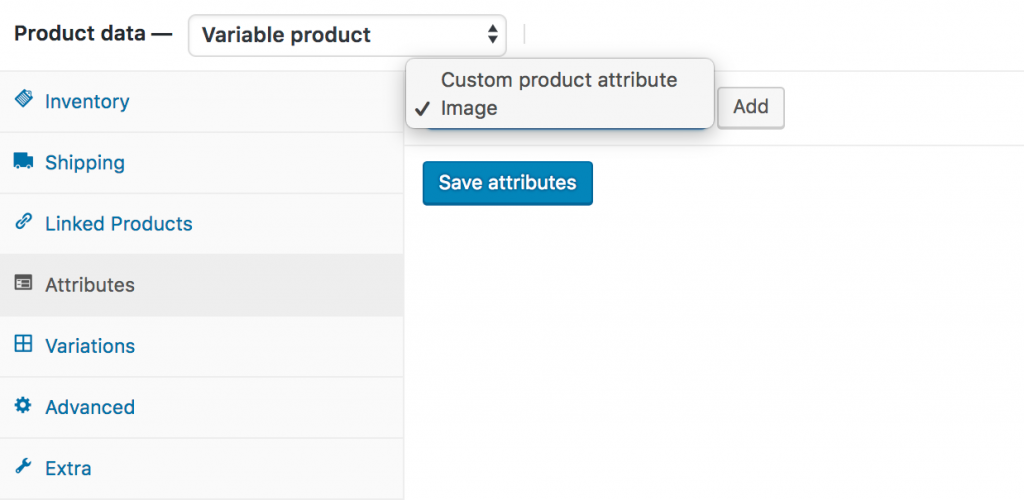 Now select the Image attribute and click on Add. You can see the following screens appears afterward.
Now select the Image attribute and click on Add. You can see the following screens appears afterward.
 If you want to select all available variations of the color attribute, click on Select all button. If you want to deselect all selected variations at once. Click on Select none button. Add all variations selecting Select All button, checked Used for variations settings and click on Save Attributes button. Check the following screenshot for guideline.
If you want to select all available variations of the color attribute, click on Select all button. If you want to deselect all selected variations at once. Click on Select none button. Add all variations selecting Select All button, checked Used for variations settings and click on Save Attributes button. Check the following screenshot for guideline.
 Now get into Variations tab. Click on Add Variation dropdown. Here you will notice two options. First one is Add Variation and the second one is Create variations from all attributes.
Now get into Variations tab. Click on Add Variation dropdown. Here you will notice two options. First one is Add Variation and the second one is Create variations from all attributes.
 In this tutorial, I am going to select Create variation from all attributes and click Go button. It’ll add all available variations like the following.
In this tutorial, I am going to select Create variation from all attributes and click Go button. It’ll add all available variations like the following.
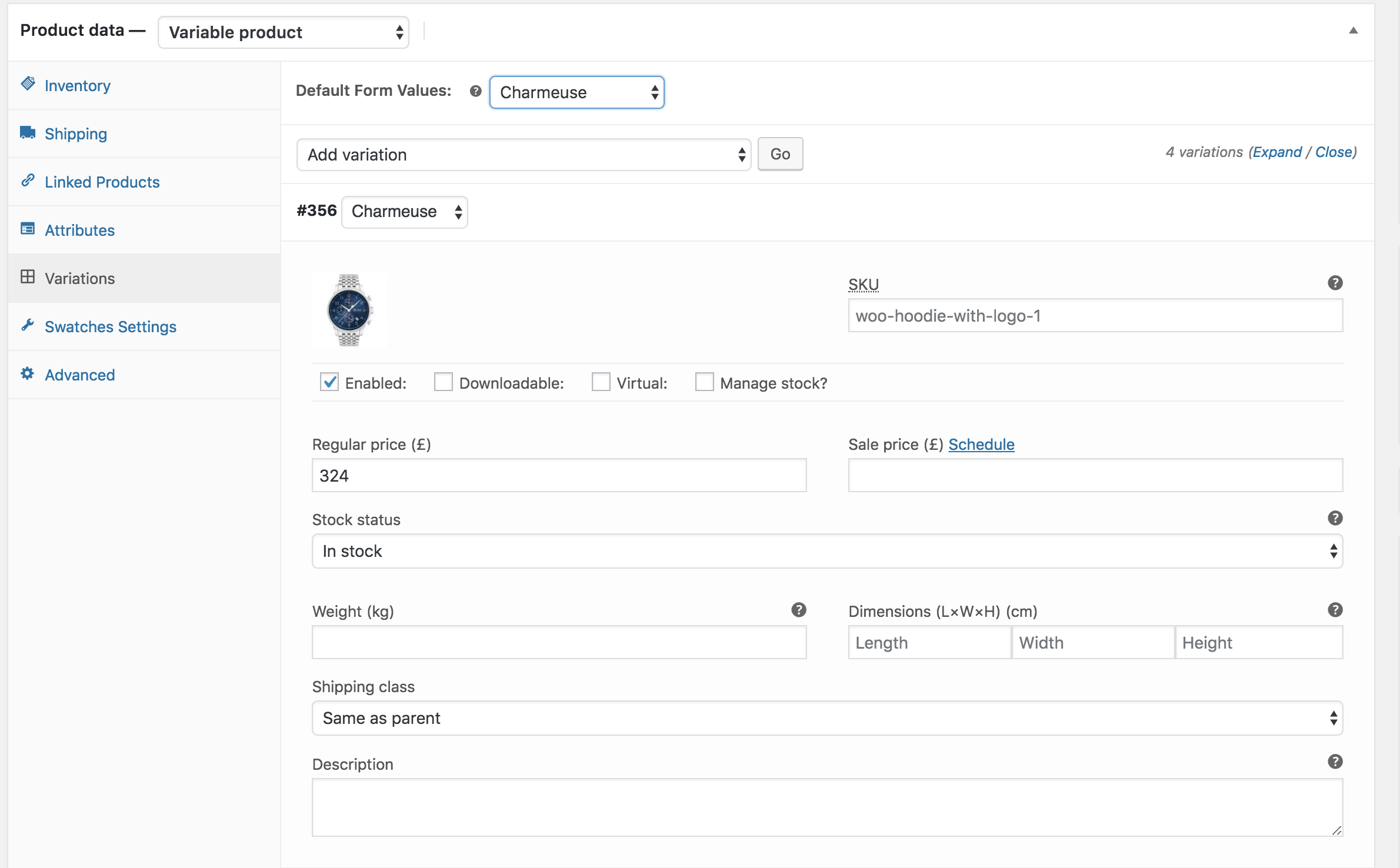 You can see the above image thatCharmeuse, Satin, Silk, Velvet and Wool image variations are there. From this screen you can add variation image, variation price, and other variation specific details. When you have done with adding all your required details in each variation, click the Save Changes button.
Remember! Don’t forget to add the price in each variation, otherwise, variations won’t be visible on the product frontend.
If you can successfully add variation. You can see the following swatches in your product frontend.
You can see the above image thatCharmeuse, Satin, Silk, Velvet and Wool image variations are there. From this screen you can add variation image, variation price, and other variation specific details. When you have done with adding all your required details in each variation, click the Save Changes button.
Remember! Don’t forget to add the price in each variation, otherwise, variations won’t be visible on the product frontend.
If you can successfully add variation. You can see the following swatches in your product frontend.
